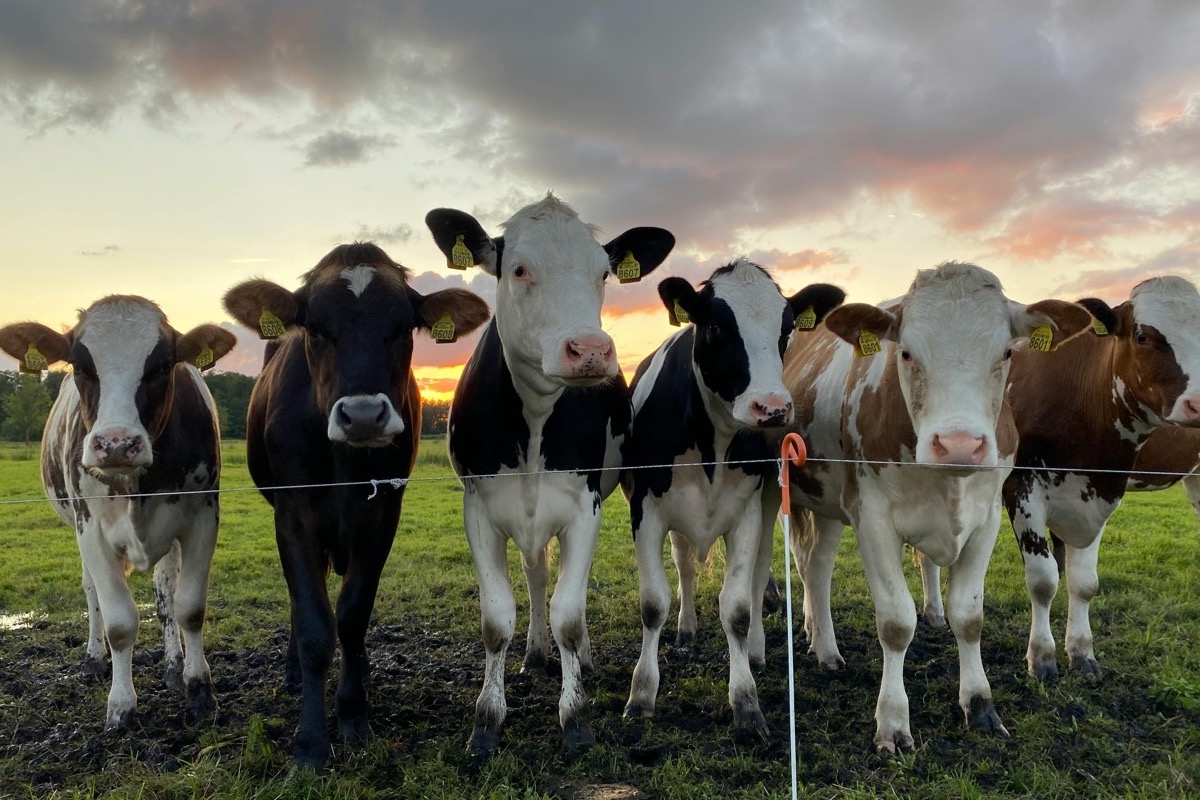Bird Flu Making Its Way Across the States by Way of Dairy Cows
Health Officials Monitor Spread of Avian Flu, Virus ‘Not a Significant Public Health Threat’

Sick birds causing sick cows resulting in a sick person — the sequence may feel like a harbinger of COVID-19 all over again, but health professionals believe the avian flu, or H5N1, is very different from what was first dubbed a “novel coronavirus.” This time, however, it is dairy cows that are getting infected, which could add to the struggles of milk and beef suppliers.
“This one is not a ‘novel’ virus,” said Dr. Henning Ansorg, medical officer for Santa Barbara County. “It has been found in birds for decades.” When H5N1 was identified in the 1990s, people in China who became infected by birds had a 50 percent mortality rate, according to the Centers for Disease Control (CDC). The Texas dairy worker who became ill in March developed conjunctivitis, or pink eye, Dr. Ansorg said, not pneumonia, which can be far more lethal. A poultry worker who developed the H5N1 symptom of fatigue in 2022 soon recovered. Both cases were suspected to be a result of direct contact by infected material, rather than the respiratory route COVID-19 is known to take.
Offering the greatest assurance to humans is that the U.S. has an approved H5N1 vaccine, said Dr. Lynn Fitzgibbons, who teaches and specializes in infectious diseases at Cottage Hospital. “As with any emerging disease, we are keeping track of whether this might develop into an epidemic that requires a vaccine response. The great news is that we are very well-positioned to respond should that occur,” Dr. Fitzgibbons said.
The current H5N1 chain of events started late in 2021 when wild birds in Europe, Africa, the Middle East, and Asia developed a “highly pathogenic” avian influenza virus, or one that had a strong ability to cause disease in birds. By 2022, U.S. chicken and turkey flocks became infected, including 41 commercial flocks and 25 backyard flocks in California. According to the CDC, cases varied from sea lions in Peru to a polar bear in the Arctic and fur seals in the Antarctic. In Europe, infection began to be reported in wild mammals and in domesticated animals like dogs, cats, mink, goats, and cows. In the U.S., detections in mammals have been reported in at least 20 states.
Among birds, mortality from H5N1 is from 90-100 percent. It’s so dangerous to birds that at the Santa Barbara Wildlife Care Network, strict protocols are in place to keep it out, including stopping visitors at the gate, covering shoes, and washing hands. To prevent spread, said the nonprofit’s Rachel Mattovich, if you come across a dead or sick wild bird or animal, don’t touch it. Call their helpline, she said, for advice on what to do — (805) 681-1080 — as the creature could carry an infection.
Cows are clearly more able than birds to withstand H5N1, with the major symptoms being fever, a lack of milk, and thick yellowish milk. The infected dairy cows were clearing the virus in a week or two, Ansorg said. The quicker recovery time gave the virus less opportunity to develop mutations, including any that might enable it to jump more easily to humans.
Most recently, concern arose over old dairy cows sold for meat after a lung tissue sample taken by a USDA inspector at a slaughterhouse came up positive for H5N1. While cows can carry the virus and not appear sick, cows that are clearly sick may not be used for meat. By May 1, in states with dairy cattle positive for H5N1, 30 samples or ground beef from retail outlets were tested and all found to be negative for the virus.
As for the milk supply, federal and state authorities became involved after the movement of cows from Texas to Michigan, Idaho, and New Mexico led to infections among herds in those states. Nine states and 38 herds are known to be infected as of Wednesday, but so far, no infected cows have been observed in California. Testing is mandatory for any lactating cows moving between states, with the U.S. Department of Agriculture reporting 2,000 samples taken in the past several weeks.
About 400 milk, sour cream, and cottage cheese samples from commercial and retail locations were tested in 38 states, with one in five samples coming up positive for virus fragments, the Food and Drug Administration reported. The fragments were unviable, having been killed by the pasteurization process. Infant and toddler formula, both liquid and powder, were also tested, coming up with no virus or fragments. The initial tests were PCR tests, which find any DNA fragments; more time-consuming tests involving incubating samples in eggs are ongoing.
The testing and monitoring continue, California state officials said, though they agree the avian flu virus was “not a significant public health threat.” Should tests detect the disease in California herds, biosecurity to keep H5N1 from being tracked to other dairy or poultry providers would be put into action, an CDFA spokesperson said, as well as working with state Food and Agriculture veterinarians on disease control and with Public Health to ensure employee health was protected and monitored.
Asked if it might be wise to give up the café latte, Ansorg said he’d been asked the same thing at a recent emergency preparedness meeting: “We were able to reassure them that they could drink a cappuccino, or a latte, without fear of getting sick.”










